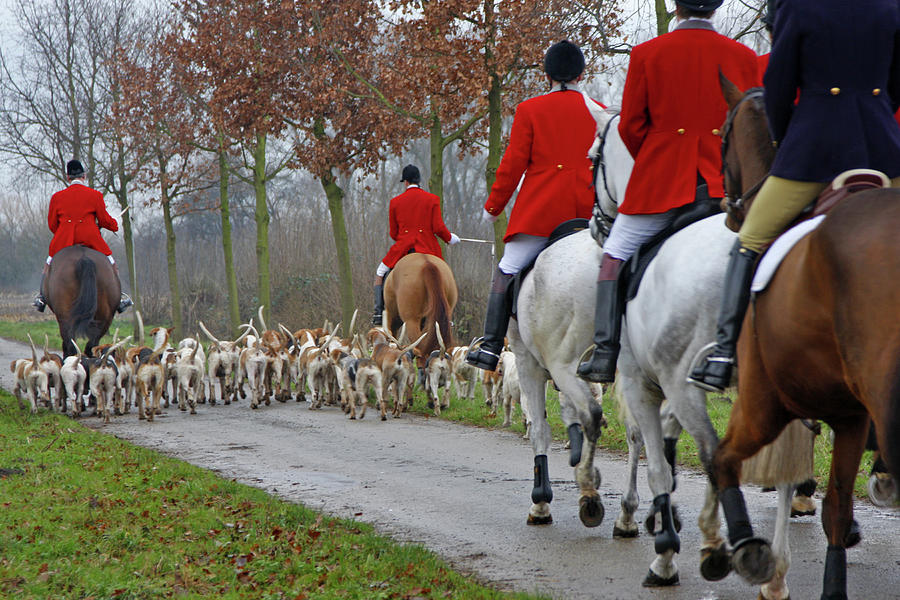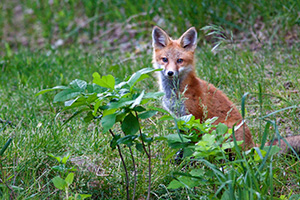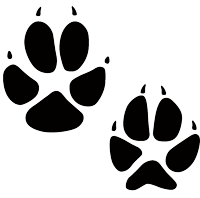
Fox Hunting All You Need to Know
No. of packs in England, Scotland and Wales : 200 (approx) + unknown number of unregistered packs
Official season : Cub hunting : 4 August to 31 October
Fox hunting : 1 November to 1 May
Usual start : Cub hunting : 5.00 a.m. in early August to 10.30 a.m. in October
Fox hunting : 11.00 a.m.
Structure of the hunt, descriptions of the persons involved and related activities
Fox hunting is the most complex of all the bloodsports. To explain how the hunting of the fox is conducted, it is necessary to describe the role of the persons involved in the days 'sport'. Much of this description also applies to other forms of hunting.
The Hounds
The foxhound was originally bred to hunt deer and hares and despite years of intensive breeding they will still 'riot' after these quarries. The foxhound stands normally between 22 - 25 inches at the shoulder.
The hounds are not bred for speed but for their stamina and scenting ability, so although the fox runs much faster than the hounds, the hounds superior stamina will eventually enable it to kill its quarry. A much faster hound could be bred by crossing it with a racing type dog, but this would not be considered 'sporting' and, after all, those who ride behind would not be to pleased if every fox was killed after only a minutes gallop!
A pack of hounds may number up to 40 (in hunting terms
- 20 couple), and are made up of either all dog, all bitches,
or sometimes a mixed pack. Different hounds in a pack may have different
scenting abilities - some better on grass, others on the road etc.
More hounds are kept in the kennels so the huntsman is able to choose
which hounds will make up the pack on any given day. It also enables
sick or injured hounds to be rested without lowering the number of
the hunting pack.
bitches,
or sometimes a mixed pack. Different hounds in a pack may have different
scenting abilities - some better on grass, others on the road etc.
More hounds are kept in the kennels so the huntsman is able to choose
which hounds will make up the pack on any given day. It also enables
sick or injured hounds to be rested without lowering the number of
the hunting pack.
Usually no feed is given to the hounds the day before the hunt in order to heighten their sensibilities. Most hounds only have a hunting life of six or seven years, they are then killed off, donated/sold to a mink hunt or maybe used to breed from. It has been known for slaughtered hounds to have been fed to their kennel mates.
The Master
They are the people who have to dig in their pockets at the end of the year and pay any outstanding hunt debts! Hunting is so costly that some hunts have joint masterships, where up to four people may share the title and overheads. The Master may belong to the Master of Foxhounds Association, (MFHA) but this is by no means statutory. If they are a member of MFHA they are bound by the rules of the Association and can be disciplined by them. The Master is responsible for controlling the kennels, the season's programme and for showing good sport and is directly answerable to :
The Hunt Committee
Who are elected by the subscribers. The committee, in their turn, appoint the Master (all friends together). They are responsible for the 'hunt country' and overall policy. They are also responsible for raising money to run the hunt, which includes the wages for hunt servants, food for the hounds, maintenance of the hunt premises and equipment, earth-stopping, damage to non-hunt property, repair to hunt jumps etc. The money raised comes from subs, caps, Hunt Supporters clubs, point-to-point races, sales and hunt races etc.
The Huntsman
They hunt the hounds and are responsible for the welfare and the cleanliness of the kennels. They are usually professional, (paid wages), but sometimes the Master will hunt the hounds, in which case the professional in charge is known as the Kennel Huntsman who will usually act as first whipper-in.
The Huntsman is assisted by :
The Whipper-in
Who is their right-hand man. Some hunts have more than one, they may be a professional or an amateur (not paid wages). Their job is to aid the huntsman, while hunting hounds, by keeping the pack together, collecting stray and straggling hounds, helping to sight the fox and keeping followers away from the hounds.
Terrier Men
This unsavoury character will 'dig out', shoot or 'bolt' the fox when it has gone to ground using terriers. Terrier men are recognisable by their flat caps, Landrovers and leers! Many of them double as pest controllers, and have connections with badger digging.
Earth Stoppers
These people go out either late
at night or early in the morning and block all the earths while the
fox is above ground going about his business. They may do the blocking
with earth, sticks and branches, plastic
bags filled with stones, rabbit nets, wire mesh or oil drums. They
are also known to block badger setts in the hunting area. They may
be paid by the hunt, or just do it for the love of it.
plastic
bags filled with stones, rabbit nets, wire mesh or oil drums. They
are also known to block badger setts in the hunting area. They may
be paid by the hunt, or just do it for the love of it.
Fence-menders
This is the Landrover-roaming band of men employed by some hunts to make good all fences etc., ruined by the mounted followers.
The mounted 'Field'
These are the hunt followers who pay their subs or 'cap' (money paid on the day), which varies from hunt to hunt, in order to have a good ride across the countryside. They rarely see a kill or the hounds working as they are kept in strict control, either by the Master or a person known as the Field Master, who may be the Joint Master or an elected member of the Committee. 90% of the field are there for the social side of hunting and are more interested in whether Rodney knows that Cynthia is having an affair with Guy, than whether the hounds have killed a fox! The majority seem to care little for the technicalities of hunting and are most likely to come out with cliched defences of hunting which they have learned parrot fashion. The field are kept well in the background while the hounds are 'drawing' the 'covert' and it is not until the hounds are well on the scent that they are permitted to follow on. If it is a slow day - scent wise - the huntsman may come in for a great deal of criticism for 'not hunting his hounds properly'(!).
The foot followers
As the name implies, these hardy folk will follow the hunt on foot. They may even form their own club. They come in all shapes, sizes and ages. The older ones are a mine of information about the hunt country and ways of the hunted fox. If you want to know where the hunt will be in half an hour they are the ones to ask.
The Car Supporters
He can generally be placed into three classes:-
'Mr Thermos Flask'
He is out for a picnic with a difference. He can be seen leaning on his car, a thermos lid in one hand, a pair of binoculars in the other. His wife usually can be seen passing sandwiches out of the window with a bored expression on her face, and a travelling rug over her knees. He prefers to travel in convoy, following 'holloas' rather than hounds. He thinks he knows all about hunting but is usually looking in the wrong direction.
'Mr Bored'
He can be seen aimlessly driving about the lanes looking for the hunt, but not putting a lot of effort into it. He is mildly surprised when he finds them.
'Mr Heavy'
He likes to travel in a gang, usually in a Landrover/pick-up. He is very boisterous. He prefers to attach himself to the Terrier man (he may be the Terrier Man!). A common exponent of the 'foxes kill chickens/cows/babies' stories because he, of course, has actually seen them do this.
There are of course exceptions to these categories, as every hunt will have its own idiosyncratic followers.
Hunt Supporters club
Most hunts have their own club, membership of which is made up of car and foot followers of the hunt. They will organise fund-raising events (including terrier shows) in order to support the hunt. They will also help in erecting and supervising fences at the point - to - point. Many publish their own newsletters.
Meet card/Fixture List
The fixture list is drawn up before the season starts and is distributed to all subscribers. The hunt follows a similar agenda each season, but much relies on the crop rotation and fox distribution. It's possible to work out approximate dates and venues from old fixture lists (hence the importance of hit reports from past seasons).
Point-to-Point
A greater part of the hunt revenue comes from these events. The programme is organised and run by the hunt, in conjunction with the Jockey Club, and entries come from riders both inside and outside the hunt. It is a one-day event, usually in early summer. Most hunts have a permanent course which they may share with another to cut down costs. The event takes place over brush hurdles. Beagle packs have been known to organise human steeplechase courses for ebullient supporters.
Hunt Ball
These usually take place at the end of the season, and represents a general party at which all levels of support from the hunt are in attendance. They are good for doing demos outside the venue.
Pony Clubs
These are registered with the British Horse Society. Nearly every hunt country has its attendant pony club. Sometimes hunts will arrange a special meet for children belonging to these clubs, who are ripe for indoctrination. Check the meet cards for special children's meets. (Although not all pony clubs do have hunt connections).
Having described those involved either officially or as spectators we will describe the procedure on a foxhunt and also a cub hunt.
The Fox Hunt
The 'meet' takes place at a pub, village green, crossroads or other suitable and easily accessible point, usually at 11.00 a.m. This is where the participants get together with the huntsman and hounds. Much is made of this public appearance and this is all the majority of the general public knows about fox hunting - the pleasant, sociable aspect. The meet may also take place at a subscriber's home, in which case it is referred to as a 'lawn meet' The hunt may also meet in another hunts country 'by invitation'.
After the meet the hunt moves off to the first 'covert' to be 'drawn', which may be some distance from the meet, either across the fields or adjacent to the road. Huntsman and hounds lead, followed by the Master and the field. The hounds are then put into the covert (where the earths may be blocked) and encouraged by the huntsman, by using their voice and/or horn, to explore and sniff out the fox (usually drawing with the wind at their backs).
The cries used by the huntsman will differ from hunt to hunt but are generally based on utterances as 'covert-hoick', 'forrard', 'leu-in', etc. The sounds employed by the huntsman may have the dual purpose of getting foxes moving. If the earths have been blocked then the fox may be lying up under a handy bush. (Foxes only use earths in moments of danger or when raising young). The hounds may find a scent a few minutes old or one that has been left by a fox half an hour before. The whippers-in (whips) will position themselves on the edge of the covert in order to signal to the huntsman when a fox is seen to leave, or the point the fox leaves the covert. The field will be drawn up on the side of the covert the hunt do not want the fox to run, e.g. towards the main roads etc. The members of the field and any foot follower will also keep a look out. When the fox is sighted the viewer may cry 'gone away' or give a 'holloa' and indicate the direction of the fox with an extended arm. A hat or hanky may also be held in the hand.
Once the hounds are on a scent and are away out of the covert, the huntsman signals to the Master, using the horn, and the field gallops on after. Some hounds 'speak' i.e. yelp in a manner peculiar to hounds, when they find the scent, some hounds hunt silently. If the pack loses the scent (checks), the huntsman will 'cast' them in a wide arc hoping to pick it up again. Often the scent of two foxes will cross and it is up to the huntsman to decide which is the hunted fox. Assuming they pick up the lost scent, the hounds will continue to hunt that fox until they either tire it or can overwhelm and kill it, 'run it to ground', lose the scent once and for all, or if the fox enters another hunt's country it will usually 'be given best' (left for another day). The hunt may cover up to ten miles chasing one fox - not necessarily in a straight line - this may take several hours.
It must be remembered that hunts like to kill their quarry above ground, as they generally believe that it is more sporting, but the quick, clean death of the fox, so joyfully spread by the hunting fraternity is, in the majority of cases a lie. They will say that a fox is always killed by hounds with a quick nip on the back of the neck thus severing the spinal cord. It may die finally this way, but it is likely that it will suffer multiple agonising injuries before the final 'nip' is given. Many foxes have been recovered with their innards torn out, but no sign of that fatal nip. When the fox is finally cornered by the hounds above ground the huntsman (if present) will encourage the hounds by voice thus, 'tear 'im and eat 'im' and similar noises. The horn will also be blown for the kill.
If the fox goes to ground and they decide to dig him out, the terrier men are called in and the following methods are used.
Making sure that all escape routes from the earth except one, are blocked, a terrier will be encouraged into the earth to locate the fox and keep him holed up. The terrier man listens for the confrontation. When the position of the two animals has been ascertained, the earth will be dug out and the terrier removed, they will then carry on digging until the fox is reached and its head and shoulders exposed. It will then be killed with either a blow to the head with a spade or crop, or more commonly, a humane killer is fired at point-blank range at the head. After removing trophies, i.e. mask (head), brush (tail), pads (feet), the remains will be thrown to the hounds.
Alternatively, the terrier will be entered in one hole and another hole is strung with a rabbit net, the purpose being to bolt the fox into the net and dispatch it. Sometimes if the earth is a large one consisting of several runs and chambers, or the ground is to hard or full of roots, digging out is not always possible and the fox will be left.
Often terriers will get trapped and have to be rescued or they will get attacked by a badger resident in the earth. The digging out of a fox may take sometime and the hunt don't usually wait for the outcome. Sometimes the earth will be stopped with the fox inside and the terrier men will return later in the day to dig it out. If the fox goes to ground to quickly it is more likely that they will bolt it, again using the terriers, and continue the hunt after giving it 'law' (a fair chance to run before hounds are laid on). Bolting is common amongst the fell packs.
Hunting takes place in all weathers unless there is a risk of injury to the horses (such as hard or slippery ground) and the hunt will pack up as dusk falls.

